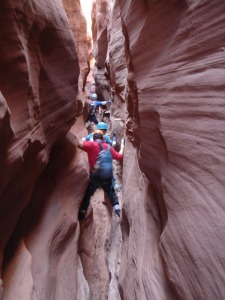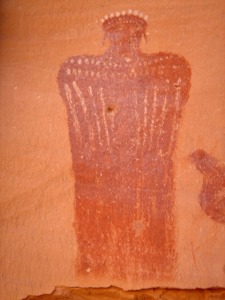I first wrote about rattlesnakes a few years back on the Desert Explorer website. The research was as much for myself as for visitors to the site. My goal was to find out the truth about rattlesnake bites. Some of the questions I addressed, or tried to, included asking what first aid measures should be employed. What kind of treatment can be administered if you are deep in the bush and cannot get to medical help? Is the venom of young snakes more potent than older snakes? And does the latest suction device, the Sawyer Extractor, really work?

I searched the web, visited the library, and called the Poison Control Center with a list of questions. My main question for the Poison Control Center was about treatment, about what to do if I was a five-day walk from help. I called them a number of times, as my research developed, and asked that question again and again. I got the same answer: “Seek medical attention.” None of the doctors I spoke with would commit to anything beyond that statement.
A good friend of mine told me how he encountered the same answer in a seminar he attended as an environmental scientist. The treatment for rattlesnake bite: “Seek medical attention.” On a recent trip to Utah one of my fellow canyoneers told me how she heard the same phrase during a wilderness medicine course.
With this in mind I decided to revisit my rattlesnake bite research. I have since scoured the web for more recent data, finding quite a bit including literature about Crotaline Fab antivenom (a brand name antivenom) and it’s effectiveness, the toxicity of venom and it’s possible increase in potency, and recent studies on the epidemiology of snakebite and trends in mortality rates.
I also made a couple of calls to the Poison Control Center, still asking the same questions and getting the same answer, but this time with a qualifying statement. I asked my usual question about what to do if I am a five-day walk from medical help and get bitten by a rattlesnake. On my second call I was given the usual answer, but I had been persistent enough in my questioning that the doctor added to his stock statement: “Seek medical attention, or die.” Finally an answer, but not the one I wanted to hear. He told me that there is no field treatment, made it sound like first aid should be quick, and limited to stabilisation of the patient, and was resoundingly against suction devices such as the Sawyer Extractor. Here he made a good point saying that if you can extract 30% of the venom, as the manufacturer states, the other 70% is still in your system and just as likely to kill you if you don’t get antivenom. (I will still carry the Extractor with me- if there is at least some chance that it might help save my life, it’s worth the few ounces of weight.)
Personal Locator Beacons
This same doctor made another good point- if you walk off into the bush, are many days away from help, and are bitten, the only sure way to save yourself is by having a satellite phone or a Personal Locator Beacon (PLB). Rattlesnake bites might be reason enough to look into a PLB, something I have never considered before. And oddly enough today I found an article online about abuses of PLB’s by people who probably shouldn’t have been let out into the wilderness alone anyway, using it to call for help because their water tasted salty. This a far cry from Dave Foreman’s fantasy Primeval Wilderness where there would be no trails, no signs, no guidebooks, no maps, and no rescue. True Wilderness, with a capital W. So much for that. For more PLB stories, click here.
Red more about rattlesnakes, bites, first aid, and find links to some of the data I found at the Desert Explorer website.
Everett Ruess
In case you didn’t hear, Everett Ruess is no longer found. The family had doubts that the bones found along Comb Ridge really were those of Ruess and sought a second DNA test from the Armed Forces DNA lab. The test results conclusively stated that the remains were not those of Everett Ruess. The remains found along Comb Ridge are now being returned to the Navajo Nation, as they are not those of a caucasian. So the mystery of Ruess’ disappearance remains a mystery. And I still have an excuse for crawling around amongst the rocks searching for bones in the Utah desert.



 Posted by desertexplorer
Posted by desertexplorer 



